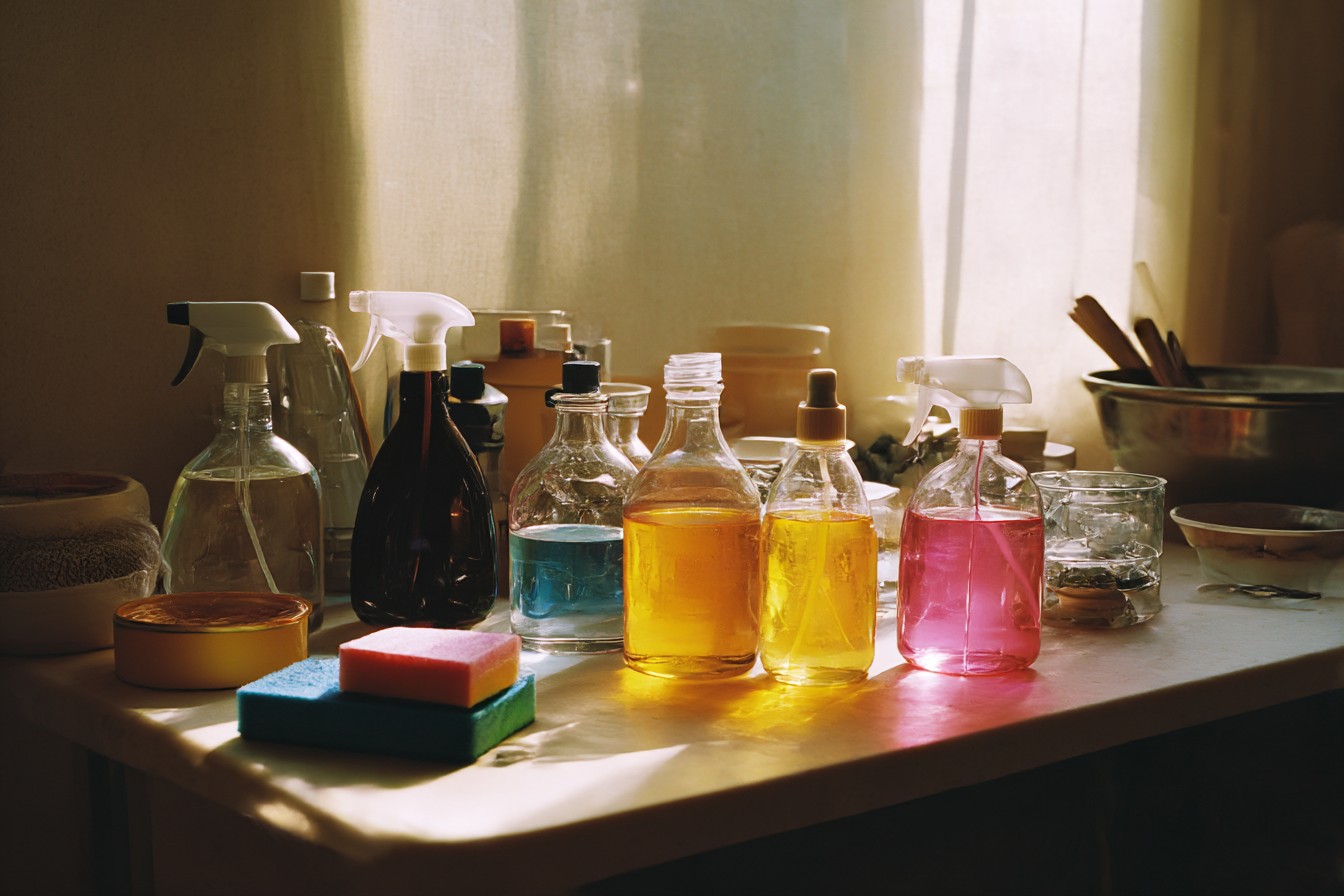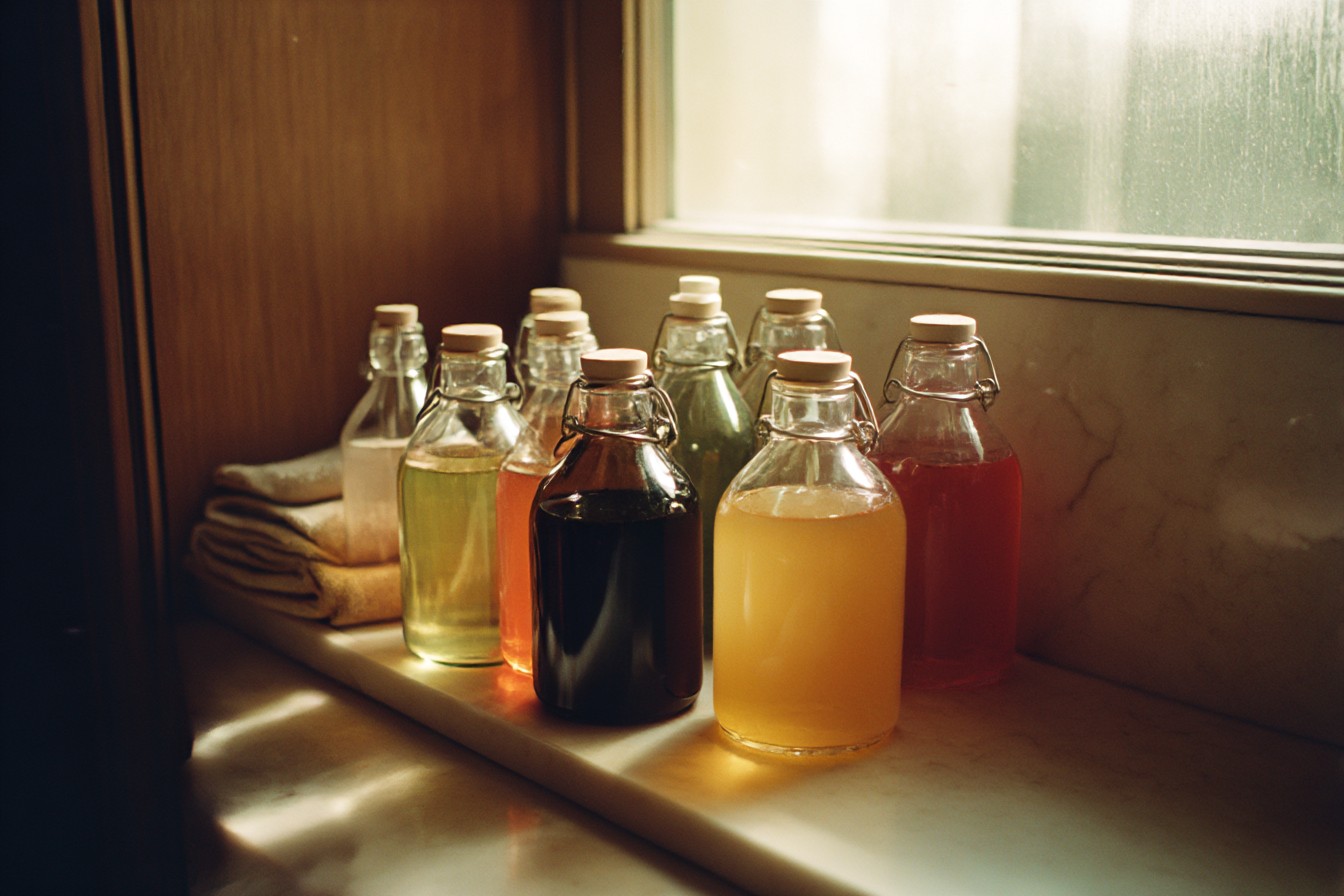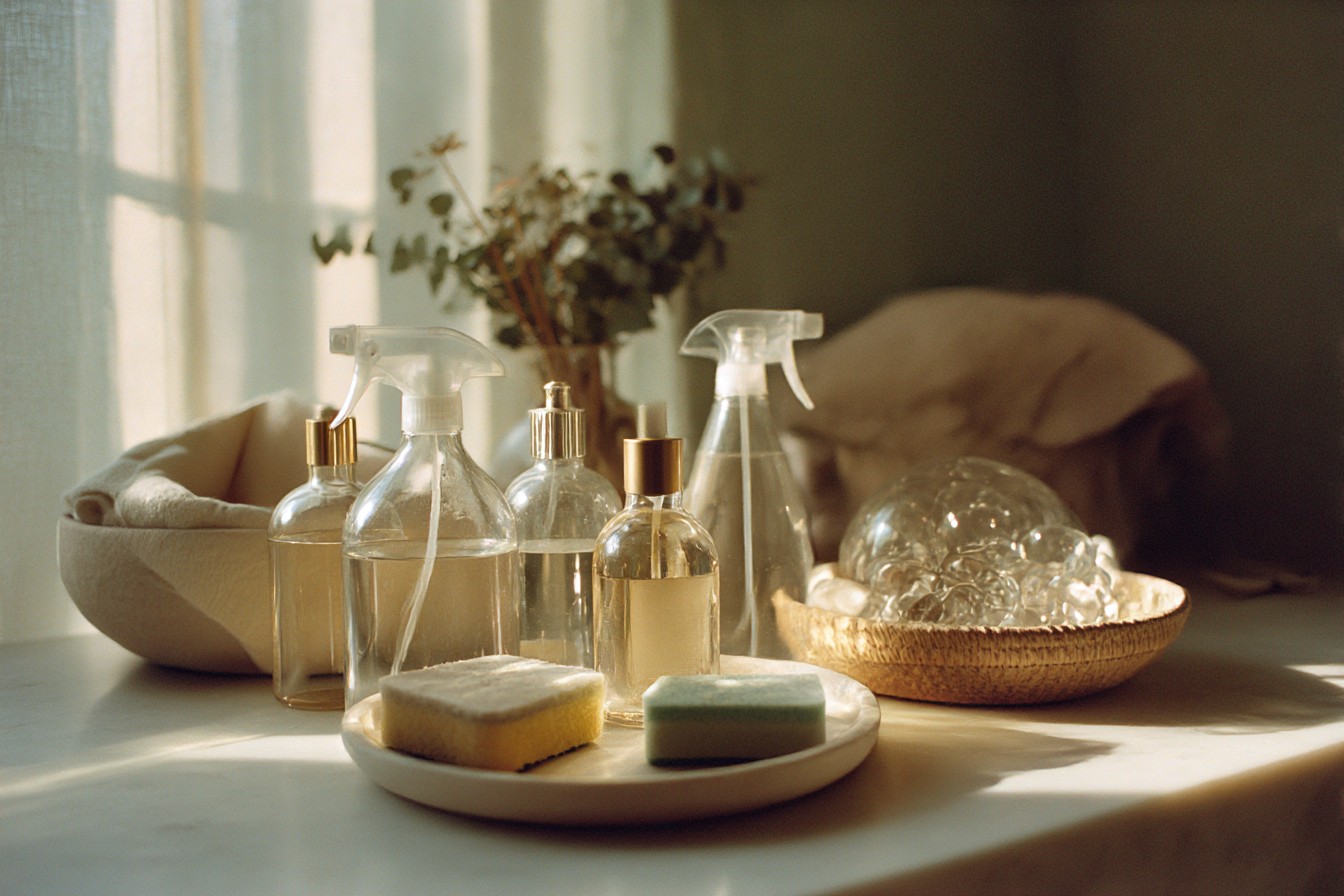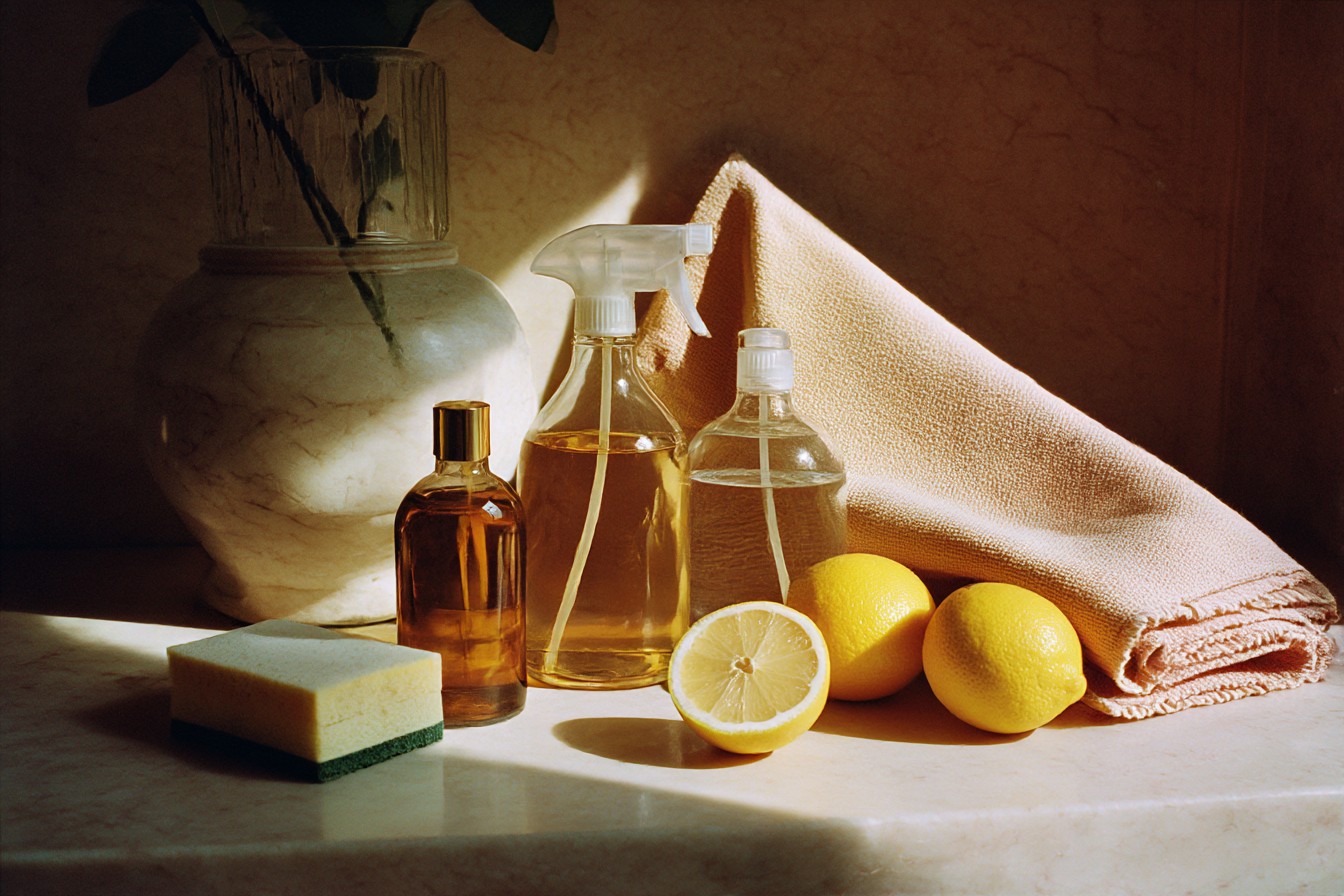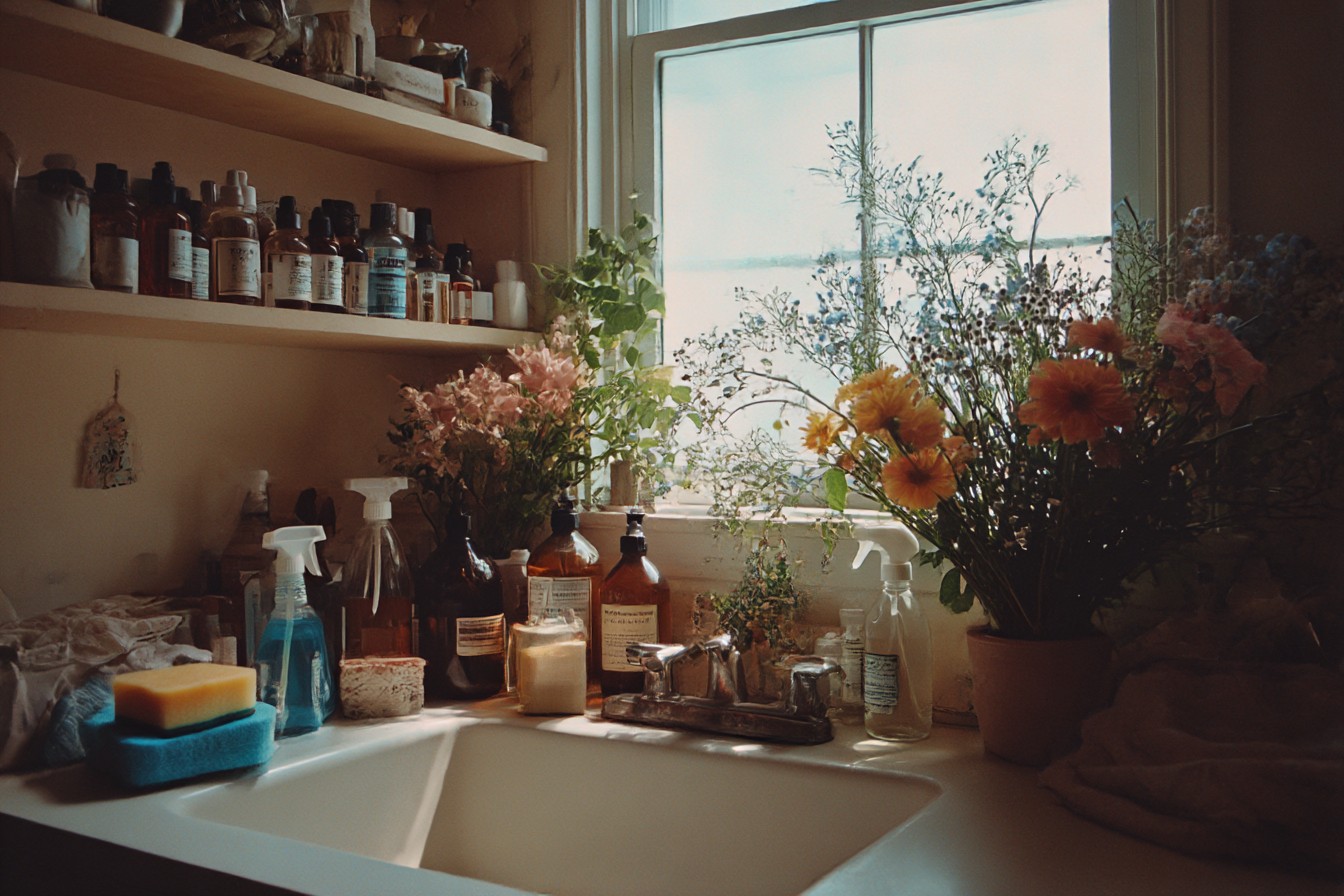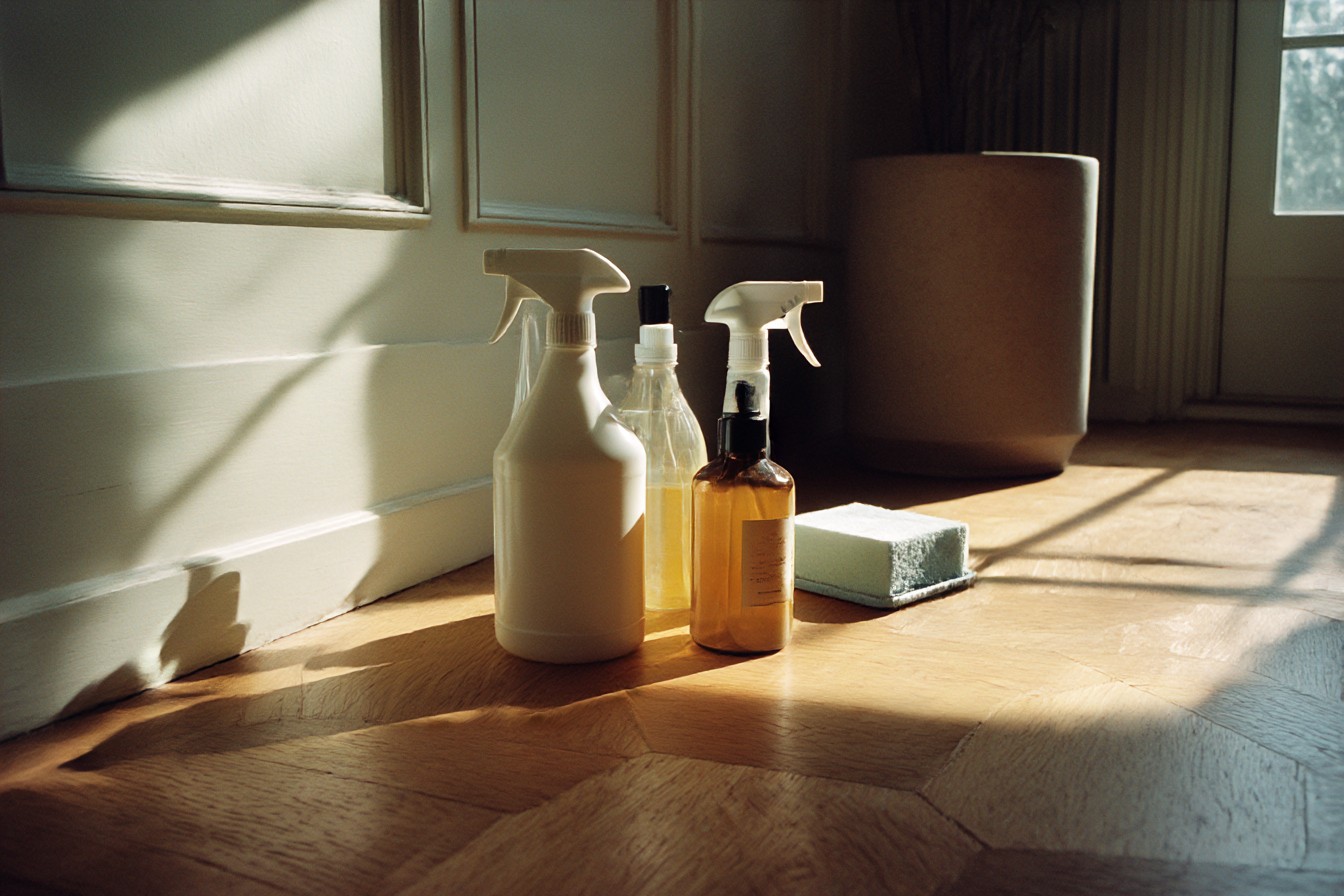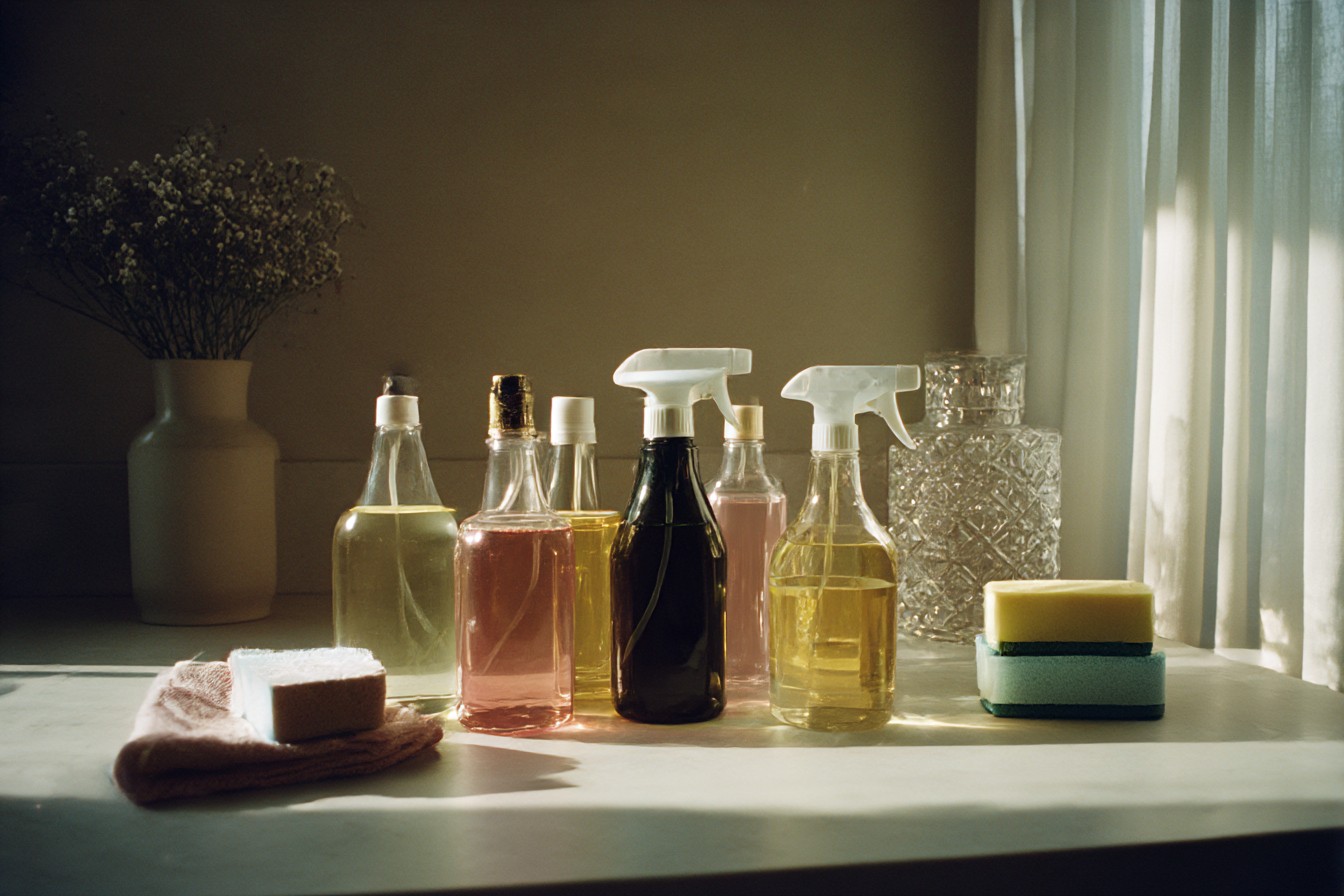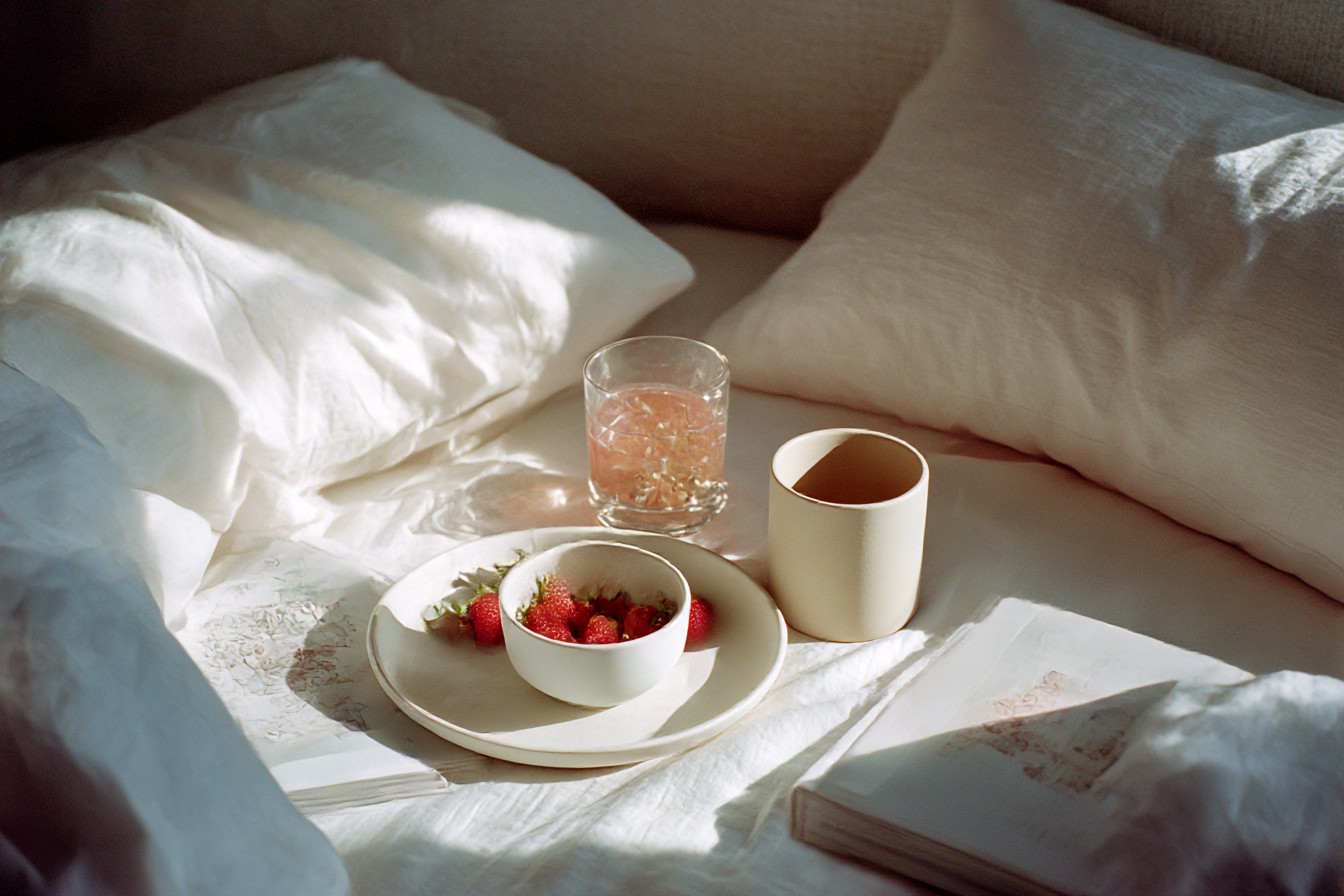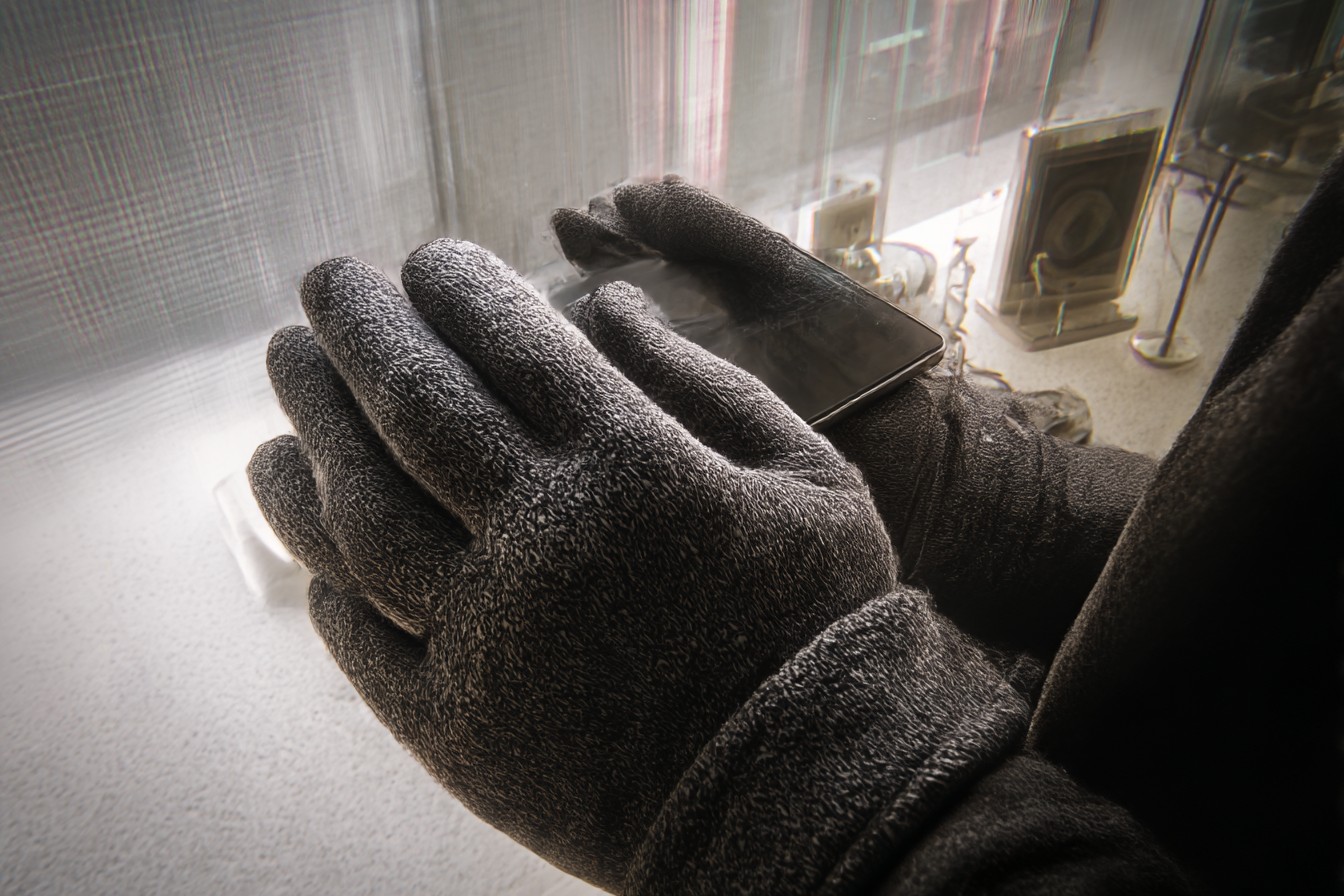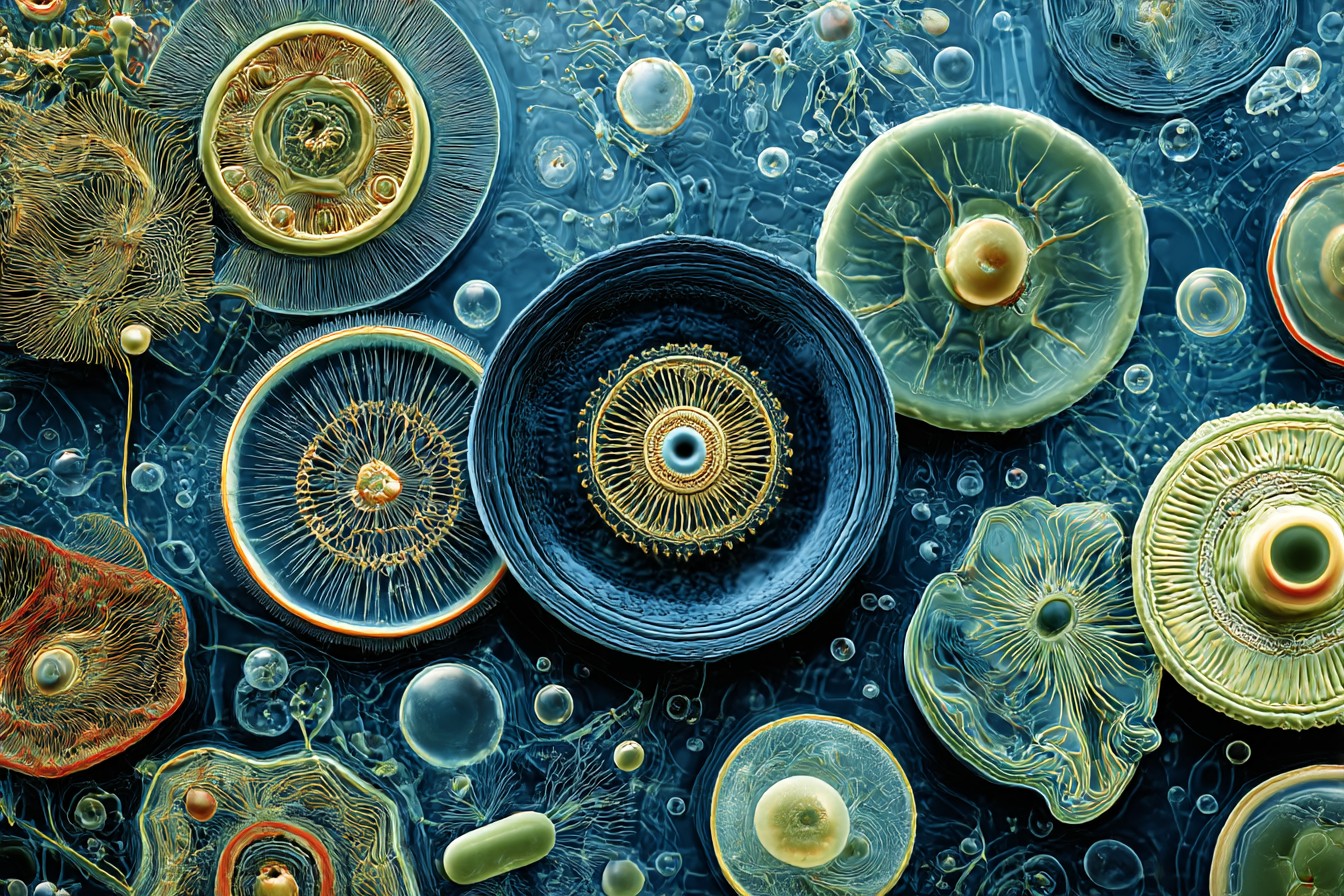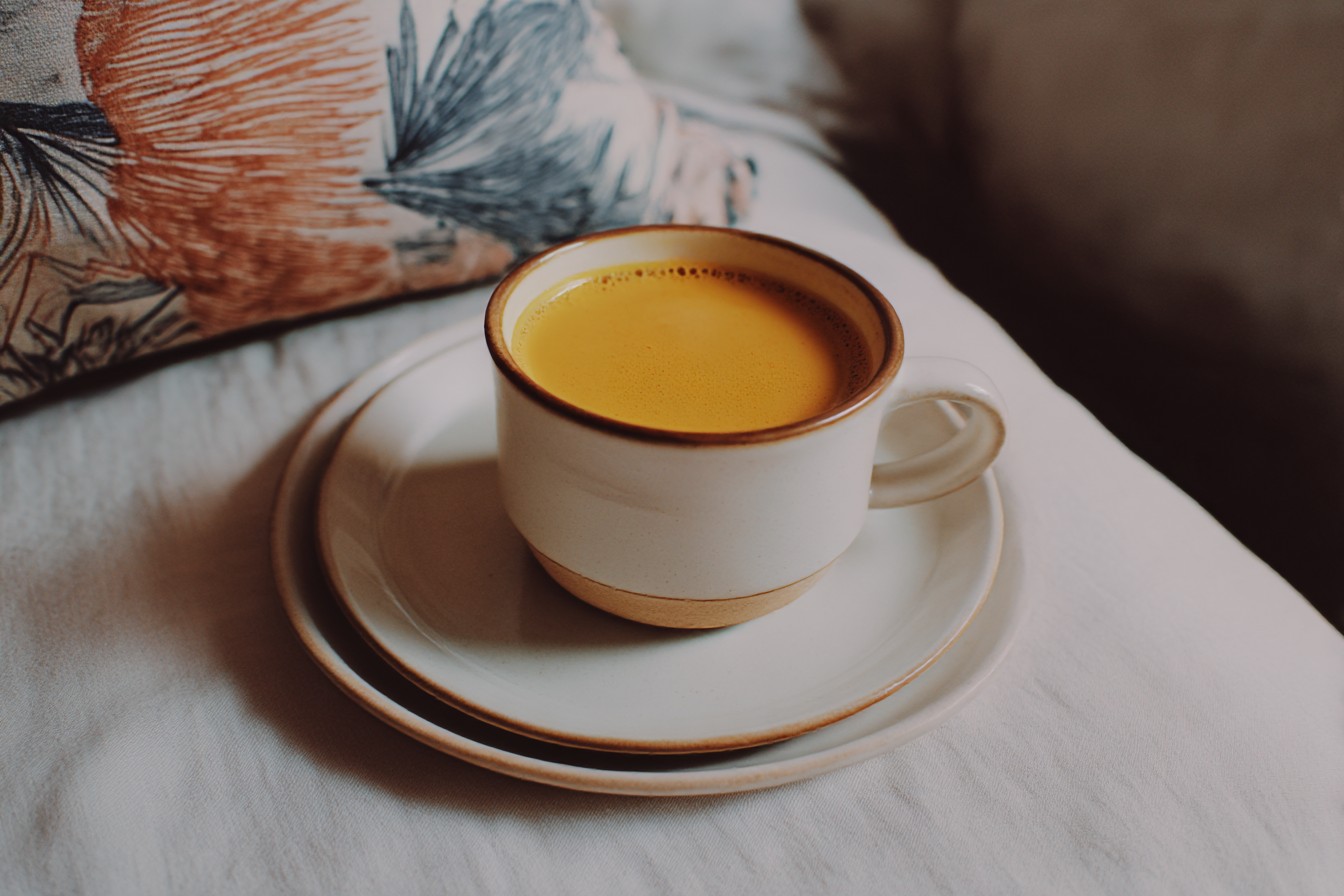I never thought I’d miss the burn of bleach in my nostrils, but here we are.
Six months ago, I embarked on what I thought would be a life-improving journey to make my own “natural” cleaning products. Pinterest had convinced me that white vinegar, baking soda, and essential oils would transform my cleaning routine into something both environmentally virtuous and Instagram-worthy. My bathroom would gleam with the power of lemons. My kitchen would sparkle courtesy of vinegar and newspaper. My conscience would be as clean as my countertops.
Oh, how bloody naive I was.
Let me be perfectly clear: my house is now definitively dirtier than when I started this experiment. And I’m spending twice as long cleaning it.
It all began when my friend Mia showed up at my flat with a collection of amber glass spray bottles she’d bought online. “I’ve started making all my own cleaning products,” she announced, setting them down on my (chemical-cleaned) kitchen counter. “It’s changed my life. No more toxins, no more waste, and it’s so much cheaper!”
I nodded along, mentally calculating how many plastic bottles of cleaning products I’d purchased in the last year alone. The environmental guilt crept in, as it tends to do whenever someone mentions their latest eco-friendly lifestyle change. Was I single-handedly destroying the planet with my affinity for Mr. Muscle?
“I’ll send you the recipes,” Mia promised on her way out. “It’s so easy.”
The recipes arrived that evening, along with links to several blogs written by serene-looking women who apparently had nothing better to do than ferment citrus peels and decant vinegar into photogenic containers.
Now, I should mention that I’m not exactly a domestic goddess on the best of days. My cleaning routine before this experiment could best be described as “crisis management.” I clean when something is visibly dirty or when my mum announces an impromptu visit. I’m not proud of this, but I’m not ashamed either. Life’s too short and Netflix queues are too long.
But something about Mia’s enthusiasm combined with those guilt-inducing statistics about plastic waste got to me. The next day, I found myself in Sainsbury’s loading my basket with white vinegar, bicarbonate of soda, lemons, castile soap, and spray bottles. The cashier gave me a look that said either “preparing for an unusual baking project” or “planning a murder with unusual cleaning skills.”
My first creation was an all-purpose cleaner: white vinegar, water, and lemon essential oil. The recipe promised it would “cut through grease and grime while leaving surfaces gleaming and fresh.” What it didn’t mention was that my entire flat would smell like a fish and chip shop. The essential oil did precisely nothing to mask the vinegar smell, despite the blog’s insistence that “the citrus notes complement the vinegar perfectly, creating a clean, fresh scent!”
No. Just… no. My boyfriend walked in while I was spraying the counters and actually recoiled. “Did you pour a bottle of salt and vinegar crisps all over the kitchen?” he asked, wrinkling his nose.
“It’s natural cleaning,” I informed him loftily. “It’s better for us and the environment.”
He looked unconvinced. “Better for what, exactly? Because it’s definitely worse for my nose.”
I soldiered on. The smell dissipated… eventually. But did the counters gleam? Not so much. They were clean-ish, in the sense that visible crumbs and splashes were gone, but they lacked that streak-free shine I was used to. I told myself this was fine – that shine probably came from chemicals that were slowly killing us anyway.
Next up: bathroom cleaner. The recipe called for baking soda, castile soap, and tea tree oil. I dutifully mixed it into a paste and went to work on the shower tiles.
Dear reader, have you ever tried to rinse baking soda paste off shower tiles? It’s a special kind of hell. What started as a quick bathroom clean turned into a 45-minute ordeal involving multiple rounds of rinsing, wiping, and swearing. By the time I finished, I was wetter than the shower itself, and there was still a faint white residue on the tiles that no amount of wiping would remove.
But the real test came a week later when I noticed the pink mildew that normally forms around the shower edges making its triumphant return. My chemical bathroom cleaner would have nuked that from orbit. My natural paste barely made it flinch. Three applications later, we were at a stalemate – the mildew was less visible but definitely still there, lurking, mocking my eco-friendly aspirations.
The floor cleaner (vinegar, hot water, and lavender oil) left my tiles tacky. The glass cleaner (vinegar and water) left streaks on my mirrors that made me look like I was perpetually dissolving in fog. The toilet cleaner (more baking soda and vinegar) fizzed impressively but left an odd ring that I couldn’t seem to scrub away.
Two months in, I realized I was spending significantly more time cleaning for significantly worse results. This wasn’t just a matter of effectiveness – it was a genuine environmental conundrum. Yes, I was using fewer plastic bottles, but I was also using more water (all that extra rinsing), more electricity (the extra loads of cloths in the washing machine), and more of my own energy.
But I persevered because I’d publicly committed to this experiment. I’d already posted those eco-smug photos of my amber bottles on Instagram. I’d already lectured my sister about the endocrine disruptors in her bathroom cleaner. I was pot-committed, as they say in poker.
The breaking point came when my parents announced they were coming to stay for the weekend. I surveyed my natural-cleaned flat with new eyes and realized it was… well… grimy. Not dirty in an obvious way, but dingy in a way it never had been before. The glass shower door had a permanent haze. The kitchen sink had a subtle staining that wouldn’t budge. The toilet had developed a faint but persistent odor that no amount of vinegar seemed to touch.
Panic set in. I had approximately 48 hours to get the flat parent-ready. I did what any reasonable person would do – I stuffed my amber spray bottles under the sink and made an emergency run to Tesco for the chemical reinforcements.
The results were immediate and deeply satisfying. One pass with the bathroom cleaner and the shower door gleamed. The kitchen disinfectant cut through months of natural-cleaner buildup in minutes. The bleach-based toilet cleaner banished both stains and smells without breaking a sweat.
My flat was clean – properly clean – in under two hours, compared to the half-day it would have taken with my natural arsenal. And yes, there was a smell of chemicals in the air, but at least it wasn’t eau de chip shop.
When my parents arrived, my mum did her usual subtle inspection of the flat (running a finger along the bookshelves, checking behind the toilet). She nodded approvingly. “The place looks lovely, dear. Very clean.”
I felt simultaneously proud and like a complete fraud.
After they left, I had a proper think about this whole natural cleaning experiment. The environmental math wasn’t as straightforward as I’d initially thought. Yes, commercial cleaners come in plastic bottles and contain chemicals. But they also work more efficiently, using less water, less physical labor, and less time. They clean more effectively with fewer applications. They prevent the growth of mold and bacteria that might require even more intensive cleaning products down the line.
I realized there’s a hidden environmental cost to ineffective cleaning that the amber-bottle brigade doesn’t talk about. The extra water, the extra electricity for laundering cleaning cloths, the extra time (which, let’s be honest, is also a resource), and the simple fact that things wear out faster when they’re not properly maintained.
Six months on, I’ve reached a compromise that makes both my conscience and my surfaces relatively happy. I’ve kept some of the natural solutions for light cleaning – the vinegar spray works fine for a quick countertop wipe when there’s nothing major to tackle. The baking soda is brilliant for deodorizing the carpet before vacuuming. The castile soap makes a decent enough hand soap.
But for the heavy lifting? For the weekly proper clean? I’m back on the chemicals, albeit more mindfully. I’ve switched to brands that offer refill pouches to reduce plastic. I’m more careful about dosing correctly rather than just squirting with abandon. And I’ve accepted that some things – like bleach for the toilet and a proper degreaser for the oven – simply don’t have natural alternatives that work as well.
Maybe someday natural cleaning technology will catch up. Maybe scientists will discover some combination of vinegar, essential oils, and unicorn tears that cleans as effectively as the chemical options. Until then, I’m making peace with my partially natural, partially chemical cleaning cabinet.
Because at the end of the day, a dirtier house isn’t better for anyone – not for the people living in it, and probably not for the planet either. Sometimes the most sustainable choice isn’t the most obviously “natural” one. Sometimes effectiveness counts for something too.
Though I will say, I’ve kept one habit from my natural cleaning days: I still put my homemade solutions in those amber glass spray bottles. They do look rather nice on the shelf, even if what’s inside them isn’t quite what Instagram thinks it is.
